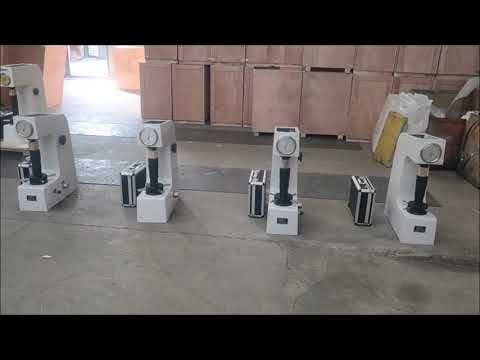Choosing the appropriate rockwell hardness tester mainly depends on the hardness range and properties of the materials. Here are some reference suggestions:
1.
For materials with high hardness, such as quenched steel, cemented carbide, etc., usually, the Rockwell hardness tester with the HRC scale is selected. Because the diamond cone indenter and the larger test force used in the HRC scale can effectively measure such high-hardness materials.
2.
For non-ferrous metals with lower hardness, such as copper, aluminum and their alloys, as well as annealed and normalized steels, the HRB scale is more suitable. The steel ball indenter and the relatively smaller test force adopted by the HRB scale can accurately measure the hardness of such softer materials.
3.
If the hardness range of the material is at a medium level, such as tempered steel, malleable cast iron, etc., the HRF scale can be considered.
4.
For thin plates, surface hardened layers or small-sized materials, surface rockwell hardness testers such as HR15N, HR30N, HR45N and other scales may be needed. They use smaller test forces, which can avoid excessive damage to the materials and at the same time can accurately measure the hardness of thin surfaces or small parts.
For example, when measuring the quenched gears in a car engine, due to their high hardness, the Rockwell hardness tester with the HRC scale should be selected; while when testing the materials of aluminum alloy doors and windows, since the hardness of aluminum alloy is relatively low, it is more appropriate to choose the HRB scale.
In addition, the size and shape of the materials also need to be considered. If the materials are small or have irregular shapes, special fixtures or testing methods may be required to ensure accurate measurement. At the same time, the measurement accuracy requirements and actual application scenarios should also be considered to select the Rockwell hardness tester that best meets the needs.







